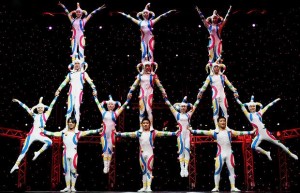If you’ve ever wondered “how do I make sure we’re doing what we can to be most effective” – consider creating structure. The structure I’m referring to creates the open communication needed for high-powered collaboration.
Good leaders behave in ways that strengthen relationships. But as I always say – while that’s good practice – it’s not enough. Powerful groups have to do specific things together that keep good habits in place and help everyone connect in partnership.
Then you can enjoy the freedom your structure offers because you’ll know that you are doing the things that keep your group in great shape to handle whatever happens in a fruitful way. You enjoy far less struggle and conflict because there are agreed upon ways to work that keep things going smoothly. Here’s an example of why it’s so important in groups.
I recently did an exercise designed to expose some of the differences in styles and preferences in a company of 60 people. As I read a series of paired opposing statements I asked them to stand up for the statement that was most true of them. Some examples: “I like a quiet work environment.” vs “I prefer a social work environment.” “I try to avoid conflict at all cost.” vs “I prefer to confront conflict openly and work through it. I don’t mind a good argument.” “When faced with a new situation or task, I prefer to jump in and experiment to find a solution.” vs “I prefer to analyze the situation think through all the options before I move into action.”
We watched while 1/2 or 1/3 of the group stood up for one statement while the other 1/2 or 2/3 stood for the opposing statement. Such differences exist in every relationship – they are the source of creativity and of conflict. The more people, the more complex those differences become.
Now imagine how things are going to work out if there are no opportunities to identify those differences and jointly design ways to accommodate each other around your goals. It’s naive to think things will always go smoothly. If we wait until differences become conflicts, they just create bigger problems.
Ideas like “get over it” and “get on with the work” just don’t suffice. That’s where conflict becomes resentment becomes withdrawal or manipulation.
If you want real teamwork and cooperation there have to be ways for people to work through differences – routinely, and as they crop up.
Think of it like a safety inspection or preventive maintenance. Routine opportunities to make sure you have good habits in place will keep the “machinery” running smoothly.
Differences in style and preferences can be difficult to address because they feel personal. We’re often afraid to bring those things up because most of us want to avoid personality conflicts and difficult emotional situations – especially at work! But with a structure for bringing people into conversation about what’s working and what’s not when the situation is not charged, it can be easy to keep creating what works for everyone to collaborate.
Here are some great ways to set up structure for your group culture.
1. Routine staff meetings. Allot 5 or 10 minutes for group alchemy. This simply means provide a fixed time slot to ask how things are going – where are things going well, what’s working, and what’s not working. Then explore ways to do more of what works and make agreements to support that.  If a problem surfaces that can’t be resolved in that time frame then it’s easy to create an action plan to resolve it. Everyone leaves feeling energized and encouraged that small matters don’t become persistent aggravations.
If a problem surfaces that can’t be resolved in that time frame then it’s easy to create an action plan to resolve it. Everyone leaves feeling energized and encouraged that small matters don’t become persistent aggravations.
2. Make agreements. Keep creating and assessing your working agreements to bring people together on “how we do things around here.” Include agreements about how you will handle breakdowns and resolve problems that arise and you’ll have a capacity for powering through situations that usually cripple effectiveness.
3. Hold periodic reviews. Timing for this can vary depending on the workflow and the complexities of your situation. But all groups need regular times – monthly, quarterly, annually – to look at how things are going and to learn from weaknesses or conflicts.
5. Identify a “structure keeper” for the group. If one or two people in your group take the leadership for keeping your structure and making sure your agreements are being kept, then you can rest knowing that things won’t get stale or deteriorate. Sharing and rotating that role will help everyone feel the ownership for the group effectiveness that keeps it strong.
Don’t let it fall by the wayside.As pressures mount, as the “to-do” list grows, it’s easy to get so focused on critical path tasks that the time for attending to the group dynamics seems like a luxury we don’t have. But the opposite is true, the busier we are, the more we need structure to make sure that attention is being given to the very source of our success – the relationships we depend on.
It’s not a quantity of time that matters so much. It’s the routine nature of these activities that creates the magic. You can address small things before they become big, you can amplify the good things people are doing, and you can re-inspire confidence in the power of your group over and over again. That’s how to achieve your gold.
Tell us – what kind of structure works for your group?

